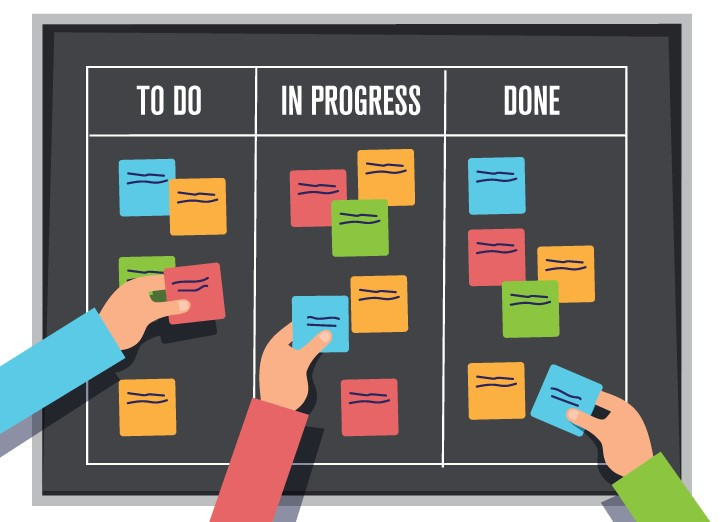Scrum Sprint planning and Kanban
Scrum Sprint planning and Kanban
19 November 2021
What is Sprint Planning
Sprint Planning indicates the amount of work that to be done in the particular sprint before the release. Sprint planning is done by the Scrum team.
The product owner tells the team how a product increases the value and utility in a particular sprint. Then the Scrum team set a Sprint goal and made a particular decision to meet the Sprint goal. The Sprint Goal must be finalized prior to the end of Sprint Planning. Developers then discuss with the Product owner and the scrum team and select some items from the Product backlog to include in the current sprint. The scrum team then includes or excludes the Products chosen by the developers for better understanding.
The developer divides the Product backlog items into smaller work for better understanding, and only they could choose how they want to work on the particular product that has to be done in the sprint.
The Sprint Goal, the Product Backlog items selected for the particular Sprint, and the plan for delivering them are together referred to as the Sprint Backlog.
What is Kanban
Kanban methodology is used to implement agile software development. Kanban methodology is used to visualize your work, limiting your in progress work, and maximizing the work flow.
Kanban teams focus on reducing the time it takes to start and finish the project. The team can visualize their work using a kanban board and continuously improve their flow of work.
Kanban board is an agile management tool and visualizes the team’s workflow. The board is divided into 3 categories:
- Work to be done
- Work in progress
- Completed work
Teams can add more categories or remove categories as per their requirement to visualize their work.
Kanban defines a continuous workflow and with the help of these teams can change their work priority. Updates can be released whenever they are ready, without a regular schedule date.
Kanban does not give a fixed time to deliver a task. A kanban workflow can be changed at any time. New product backlog items can be added to the backlog, and existing cards can be removed based on prioritization.
Difference between Sprint Planning and Kanban
| Sprint Planning | Kanban | |
| Prioritization | It defines a systematic workflow. The next task is chosen only if the previous task is completed. | The entire task is pull for each iteration. |
| Modifications or Changes | It allows modification or changes in a project between the sprints before the completion of the project. | Not recommended to make the changes. |
| Best Applications | Best for the projects in which requirement changes rapidly. | Best for teams with stable priorities |
| Commitment | Teams are required to commit a specific amount of work in a particular time. | Teams are not required to commit a specific amount of work in particular time. |
| Adding a new product | It is not possible to add new product backlog item in an ongoing sprint. | Product backlog items can be added as per priority and requirement. |
| Timeframes | Scrum sprint has a specific timeframe. It goes with its schedule. | It does not have a specific timeframe. |
| Best for | Large projects can easily divide into manageable sprints. | It only works well with small teams, so it is not suitable for large size teams. |



